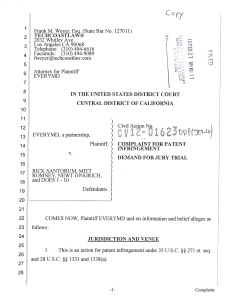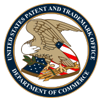New Rules for the America Invents Act
Today, the United States Patent and Trademark Office officially released its new Rules package for implementation of changes wrought by the America Invents Act.
The Changes To Implement the First Inventor To File Provisions of the Leahy-Smith America Invents Act are here: [PDF]. Reference: 78 Fed. Reg. 11024-11059 (Fed. 14, 2013).
The Examination Guidelines for Implementing the First Inventor To File Provisions of the Leahy-Smith America Invents Act are here: [PDF]. Reference: 78 Fed. Reg. 11059-11088 (Feb. 14, 2013).
Happy reading!
New Federal Circuit Action in Novo Nordisk v. Caraco
On April 17, 2012, the Supreme Court issued its opinion in Caraco v. Novo Nordisk, holding that “Congress has authorized a generic company to challenge a [brand manufacturer’s] use code’s accuracy by bringing a counterclaim against the brand manufacturer in a patent infringement suit.” In so holding, the Supreme Court reversed a Federal Circuit ruling from 2010, which vacated an injunction of the lower court requiring the brand manufacturer to change its use code at the FDA. In that lower court ruling, the Eastern District of Michigan entered the following injunction:
Novo Nordisk is hereby directed by mandatory injunction under 21 U.S.C. § 355(j)(5)(C)(ii)(1)(bb) to correct within twenty (20) days from the date of this Order and Injunction its inaccurate description of the ‘358 patent by submitting to FDA an amended Form FDA 3542 that reinstates its former U-546 listing for Prandin and describes claim 4 of the ‘358 patent in section 4.2b as covering the “use of repaglinide in combination with metformin to lower blood glucose.”
In light of the Supreme Court’s decision, Caraco on May 1 filed a motion at the Federal Circuit, seeking to have the Eastern District of Michigan’s injunction affirmed (text from the Federal Circuit’s docket):
| 5/1/2012 | MOTION: Entry 85 :by Appellees – Motion to Affirm Injunction of the District Court pursuant to U.S. Supreme Court decision Reversing the Court’s Judgment. SERVICE : by Mail on 5/1/2012 |
Today, the Federal Circuit entered an order [PDF] giving Novo Nordisk until tomorrow to file its response to Caraco’s motion. The full text of the order reads:
Novo Nordisk A/S et al. (Novo Nordisk) move for an extension of time to respond to Caraco Pharmaceutical Laboratories, Ltd. et al. (Caraco)’s motion to affirm the injunction of the United States District Court for the Eastern District of Michigan. Caraco opposes. Novo Nordisk replies.
The court notes that on April 17, 2012, the Supreme Court of the United States in Caraco Pharm. Lab., Ltd. v. Novo Nordisk A/S, 132 S. Ct. 1670 (2012) reversed the judgment of this court and remanded the case for further proceedings.
Upon consideration thereof,
IT IS ORDERED THAT:
(1) This court’s opinion of April 14, 2010 is vacated, the mandate of this court issued on August 5, 2010 is recalled, and the appeal is reinstated.
(2) The motion is granted to the extent that Novo Nordisk’s response is due May 24, 2012.
Should be interesting to see what comes of this in the near future.
The words mean what they say…
Short and sweet today, from the Federal Circuit.
In an appeal captioned SmartMetric v Amex, the Federal Circuit ruled, perhaps unsurprisingly, that the following claim language did not encompass the use of contactless smart cards (such as RFID cards):
“insertion of said data card into said data card reader” (emphasis added).
Smartmetric argued that insertion…into covered “a card being ‘passed near’ a card reader,” but to no avail.
Who knew that things could sometimes be so clear (especially in patent law)?
Mayo Collaborative Services v. Prometheus Laboratories: Supreme Court Limits the Scope of Patent Claims to Diagnostic Methods
 This morning, the Supreme Court of the United States handed down its unanimous opinion in Mayo Collaborative Services et al. v. Prometheus Laboratories, Inc., reversing the Federal Circuit’s earlier ruling that the diagnostic-method patent claims at issue are patentable subject matter under 35 U.S.C. Sec. 101.
This morning, the Supreme Court of the United States handed down its unanimous opinion in Mayo Collaborative Services et al. v. Prometheus Laboratories, Inc., reversing the Federal Circuit’s earlier ruling that the diagnostic-method patent claims at issue are patentable subject matter under 35 U.S.C. Sec. 101.
In making this ruling, the Court reaffirmed the guidance from its case law that although “an application of a law of nature . . . to a known structure or process may [deserve] patent protection,” “a patent must do more than simply state the law of nature while adding the words ‘apply it.'” (Citing Diamond v. Diehr, 450 U. S. 175, 185 (1981), and Gottschalk v. Benson, 409 U. S. 63, 71–72 (1972)) (emphasis in original). “[The patent] must limit its reach to a particular, inventive application of the law.” Opinion at 1 (Syllabus). In the end, the Court held Prometheus’s claims to be unpatentable subject matter because (1) the claims inform the audience about a law of nature; (2) the steps of implementing the law of nature are “understood, routine, conventional activity”; and (3) the steps, even when viewed as a whole, “add nothing significant beyond the sum of their parts taken separately.” Opinion at 11.
Santorum, Romney, Gingrich, and 1000 others on the hook for patent infringement?
 I draft this post with minimal comment because I don’t know what to make of this complaint: EveryMD v. Rick Santorum et al. It’s short enough (six pages) that you can read the entire thing for yourself in less than five minutes.
I draft this post with minimal comment because I don’t know what to make of this complaint: EveryMD v. Rick Santorum et al. It’s short enough (six pages) that you can read the entire thing for yourself in less than five minutes.
In sum, EveryMD is suing Rick Santorum, Mitt Romney, Newt Gingrich, and several thousand other John Does in the Central District of California for infringement of EveryMD’s patents.
I would guess that EveryMD’s actual target is Facebook, and that this is meant to put pressure on Facebook for settlement purposes, but that’s just a guess. It appears that Facebook has at least one of EveryMD’s patents in reexamination, and rejected at least one EveryMD offer to license its patents.
Here are links to the patents recited in the complaint (at Google Patents):
U.S. Patent No. 6,671,714
U.S. Patent No. 7,644,122
